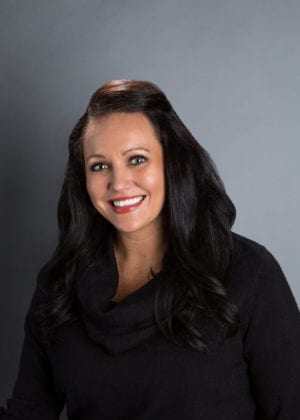The Mystery Of Myofunctional Therapy Explained

Ahhhh, the mystery of myofunctional therapy!
I have a personal relationship with many of my dental hygiene patients. Our fun, catch up banter usually ends with a perplexed “what the heck is that” type of look when I tell them how I plan to spend my summer. Tongue training. Not weight training, not cardiovascular training, not marathon training. Tongue training! Yes, you read that correctly. I will be spending my summer working with my first myofunctional therapy patients…training tongues if you will. In this article, I will answer the 6 important questions about myofunctional therapy:
1. What is myofunctional therapy?
2. Who needs therapy?
3. Why therapy is important?
4. When should therapy take place?
6. Where do I learn more?


WHAT IS MYOFUNCTIONAL THERAPY?
Well, the quick and easy answer is “it’s kind of like physical therapy, but for your tongue”. You’re asking why does the tongue need physical therapy, right? Good question. The tongue, unlike any other muscle in your body, only has one end and tends to get itself into trouble, going willy nilly in the mouth. All other muscles have an origin and insertion, which make it impossible for muscles to do their “own thing”. You don’t find your hamstring going left when you say right do you? (Well, not without painful injury and a long line of cuss words, you don’t!). This is where the tongue starts to get into trouble. It lacks guidance on what it’s supposed to do, this “guidance” is muscle tone and muscle function. Many people have zero problem with the tongue. They can make annoying clicking sounds, funny bowl and taco shapes, suction to the roof of the mouth and maybe stick the tongue all the out. Many others can’t and aren’t aware that they are different until they watch their coworker lick frosting off their chin!
If you’re a myofunctional hot mess, you are often looking for that one thing that is “broken” so you can fix it. But it’s not really just one thing that makes you need myofunctional therapy. It’s almost as if you just aren’t firing with all cylinders when you have myofunctional dysfunction. You usually have a lot of symptoms that point to a common root cause, and as a myofunctional therapist, I am looking for root cause resolution. Then, I work with you to strengthen and re-pattern your habits so you’re in balance and functioning properly.
While the tongue plays a huge role in therapy, my focus is really on the airway and treatment of the person as a whole. I work to create overall health by teaching you how to talk, speak, eat, drink and breathe better.
There are 4 goals of myofunctional therapy:
1. Nasal breathing
2. Tongue in proper resting position in the palate
3. Mouth closed and lips sealed
4. Proper swallowing
WHO NEEDS THERAPY?
I do a complete exam to determine exactly if you need therapy, but in general, people who breathe through their mouths, have tongue-tie’s, or snore definitely need myofunctional therapy.
These people might have some of the following symptoms: nasal congestion and allergies; digestive issues; tongue-tie; relapsed orthodontic work; sucking habits; speech challenges, such as a lisp; chronic ear infections; snoring; sleep apnea; headaches; jaw pain; or poor posture


WHY IS IT IMPORTANT?
Therapy is important because it helps strengthen the weak muscles of the face and tongue, working to have all muscles in balance and functioning well together. When this happens, patients are able to breathe properly, giving their body the oxygen it needs instead of over breathing. Patients can eat, drink and swallow properly, eliminating the digestive problems that come from swallowing air. Furthermore, patients are relieved of head and jaw pain because we get the jaw muscles stabilized and in proper resting positon. For patients with tongue-tie’s, therapy helps keep the scar tissue from reattaching, as well as, teaching the patient how to use full range of movement with their once restricted tongue.
WHEN SHOULD THERAPY TAKE PLACE?
Ideally, the sooner the better but there are a few caveats.
When it comes to habits such as thumb or finger sucking, it is important to make sure the kiddo is ready to stop! For sure we want to stop the habit before the baby teeth fall out, but if the kid isn’t ready to stop it will be a frustrating battle. Better to wait until the child is ready and then go for it guns a’blazin!
When it comes to young kids, it can be challenging because compliance for the normal myofunctional therapy exercise can’t be understood or followed. For the younger children, I work with the parents and we really get creative to help the child through treatment.
For older children, 7 and up, starting myofunctional therapy is a great time because they are able to communicate, understand the exercises and they are eager to see their progress. This time period is great because it can get children to re-pattern behaviors such as tongue thrusting before they start orthodontic treatment.
When it comes to tongue-ties, I like to work with patient about 2-3 sessions before a tongue-tie is released and then for 6-9 sessions following the release, depending upon their myofunctional needs.
HOW IS THERAPY COMPLETED?
All of my therapy programs are completed via video conference. This type of delivery makes therapy available to people in all geographic locations with a good internet connection and computer. It also allows me to serve my patients with convenient hours, no commutes to and from an office, and helps keep my services priced affordably because I don’t have to rent an expensive office and hire staff!
The first step is determining the need for therapy by completing a comprehensive exam and identifying myofunctional dysfunction. Once the exam is complete, I customize a treatment plan for each patient and review treatment plans and goals. Therapy is ready to begin once the patient accepts the treatment plan and pays for treatment services.

WHERE DO I LEARN MORE?
You can browse my website for more information. I also offer, free 30-minute phone consultations to introduce myself and help answer your questions. This free consult can help you decide if you want to move forward to the comprehensive exam. I have oodles of reference materials and articles to read if you’re so inclined! Just drop me an email and I’d be happy to give you more direction for information.
If any of the above issues resonate with you or someone you know, I encourage you to contact me. I have programs to fit a range of people and I would love to see how I can help you out!

